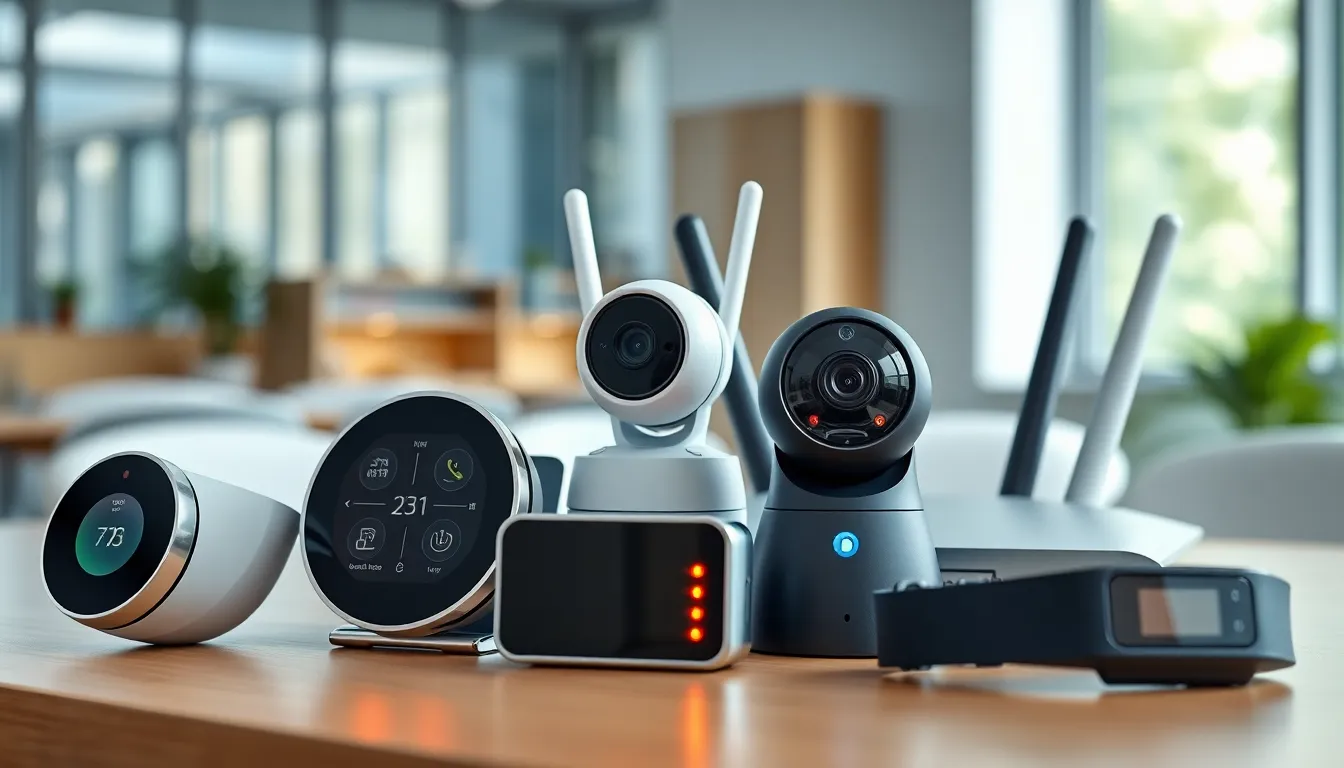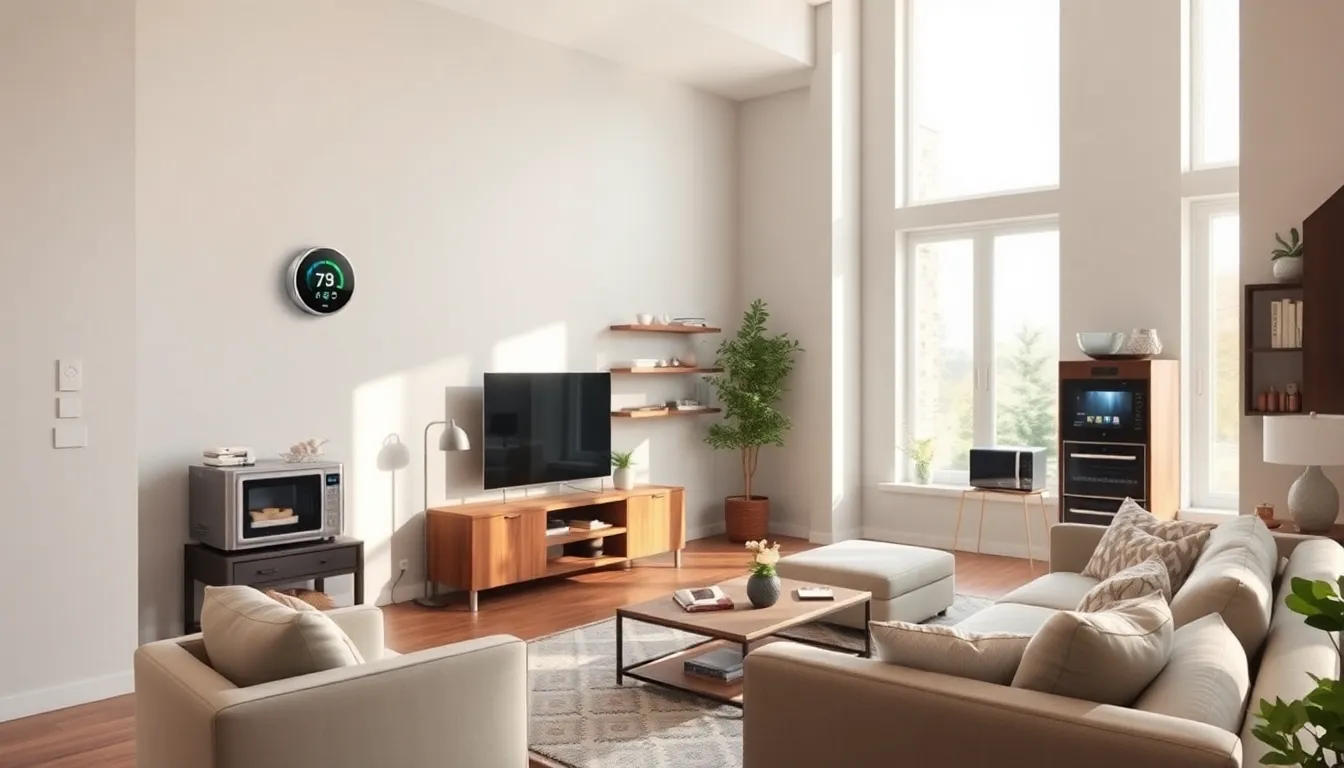In a world where everything from your fridge to your toaster is getting smarter, the Internet of Things (IoT) is revolutionizing how we consume energy. But as these gadgets multiply, so does their appetite for power. Ever wonder if your smart light bulb is throwing a rave while your wallet weeps? It’s time to dive into the quirky yet crucial realm of IoT energy consumption.
Table of Contents
ToggleOverview of IoT Energy Consumption
IoT devices contribute significantly to energy consumption trends across various sectors. Smart thermostats, security cameras, and connected home appliances consume power continuously, even when idle. This constant energy draw results in higher electricity bills for consumers and businesses alike.
According to a report from the International Energy Agency (IEA), IoT devices could account for up to 7% of global electricity demand by 2030. This statistic underscores the need for energy-efficient design in IoT technology. Developers are exploring low-power communication protocols and energy harvesting techniques to mitigate consumption.
Smart sensors optimize energy use in commercial buildings by adjusting lighting and HVAC systems based on occupancy. Such advancements can lead to energy savings of up to 30% in some cases. Companies that deploy IoT solutions have reported reduced costs and improved operational efficiency.
Moreover, utilities are beginning to deploy smart meters that provide real-time data on energy usage. By monitoring consumption patterns, consumers gain insights that can inform adjustments to their habits. Behavioral changes can result in significant reductions in energy use.
In industrial settings, IoT applications assist in predictive maintenance, which prevents energy waste from malfunctioning equipment. Real-time monitoring allows companies to address issues before they escalate. Minimizing downtime and optimizing performance leads to substantial financial benefits.
Despite the advantages, the rapid growth of IoT raises concerns about carbon emissions. As more devices connect to the internet, their collective energy consumption may outpace efforts to transition to renewable sources. Industry leaders must prioritize sustainability while innovating new IoT solutions.
Factors Affecting IoT Energy Consumption

IoT energy consumption depends on several key factors, each influencing overall efficiency. Understanding these elements helps in designing smarter, more efficient devices.
Device Type
Different device types significantly impact energy consumption patterns. For example, smart thermostats and security cameras consume power continuously, even in standby mode. In contrast, wearables might use energy sparsely, focusing on brief data transmission. The International Energy Agency highlights that certain devices, like connected home appliances, could account for a substantial portion of energy consumption. Each device class therefore presents unique challenges and opportunities for optimizing energy use.
Data Transmission
Data transmission frequency plays a crucial role in energy consumption. Regular data uploads place a heavier load on power usage compared to devices with sporadic transmission. For instance, devices utilizing low-power methods, such as LoRaWAN or Zigbee, minimize energy consumption while still maintaining connectivity. Conversely, devices relying on cellular networks often require more energy to transmit data, especially in remote locations. Thus, optimizing data transfer protocols directly relates to reducing IoT energy demands.
Network Topology
Network topology influences how devices communicate and consume energy. In a star topology, devices connect to a central hub, which can lead to higher energy usage due to continuous data relay. Alternatively, mesh networks allow devices to communicate directly with one another, often decreasing overall energy consumption. This approach leverages local communication, reducing the need for constant data transmission to a central point. Network design therefore becomes a critical factor in managing IoT energy efficiency effectively.
Strategies for Reducing IoT Energy Consumption
Reducing energy consumption in IoT devices involves implementing effective strategies. Prioritizing energy-efficient design is essential.
Energy-Efficient Protocols
Energy-efficient communication protocols significantly minimize power usage in IoT devices. Low-power options like LoRaWAN or Zigbee enhance connectivity while consuming less energy. Utilizing these protocols reduces the energy footprint of devices in various applications. Moreover, incorporating adaptive protocols allows devices to adjust their power consumption based on activity levels. Switching to energy-efficient models not only lowers costs but also supports sustainability efforts across industries. Implementing these strategies could lead to more significant energy savings and a reduced environmental impact.
Smart Scheduling
Smart scheduling optimizes when devices operate, directly reducing energy consumption. Setting devices to activate during off-peak hours can harness lower energy costs and maintain efficiency. Users can program smart devices to power down during idle periods, conserving energy when not in use. Additionally, integrating machine learning improves scheduling accuracy and responsiveness to user behavior. Employing these scheduling techniques results in considerable energy savings for households and businesses. Leveraging smart scheduling strengthens the overall energy management of IoT systems, further contributing to sustainability goals.
Future Trends in IoT Energy Consumption
Emerging trends in IoT energy consumption reflect advancements in technology and the increasing demand for sustainability. Predictions indicate that by 2030, IoT devices may account for 7% of global electricity demand, highlighting the urgency of energy-efficient design. Companies are focusing on implementing low-power communication protocols. For instance, protocols like LoRaWAN and Zigbee help significantly reduce overall energy consumption.
Machine learning is gaining traction in optimizing energy use. Solutions that adapt power consumption based on activity levels can enhance efficiency further. Intelligently scheduled device operations allow for energy conservation during peak hours and idle times. They pave the way for substantial energy savings across various sectors.
Additionally, the integration of smart sensors optimizes energy usage, particularly in commercial buildings. Implementing these sensors can yield energy savings of up to 30%. Utilities are also adopting smart meters to empower consumers with real-time data. This capability allows individuals to modify energy habits, leading to decreased usage.
In industrial environments, predictive maintenance applications mitigate energy waste from equipment malfunctions. Addressing energy consumption patterns linked to device types is crucial. Continuous power consumption from smart thermostats and security cameras contrasts with the more sparing usage seen in wearables. Data transmission frequency and network topology further influence power usage, emphasizing the importance of considering these factors in future designs.
Sustainability remains a guiding principle in evolving IoT technologies. Innovations must prioritize energy efficiency while meeting the growing demands of consumers and industries. Anticipating how these technologies will unfold demonstrates the commitment to a more sustainable future.
The rise of IoT devices presents both opportunities and challenges in energy consumption. As technology advances and smart devices become more integrated into daily life, understanding their impact on energy usage is crucial. Companies and consumers alike must prioritize energy-efficient designs and innovative solutions to minimize power consumption.
By adopting low-power communication protocols and utilizing smart scheduling techniques, significant energy savings can be achieved. The integration of machine learning further enhances efficiency, allowing devices to adapt to user behavior and optimize energy use.
Ultimately, a commitment to sustainability is essential as the IoT landscape evolves. This approach not only addresses energy consumption but also supports a greener future for all.

